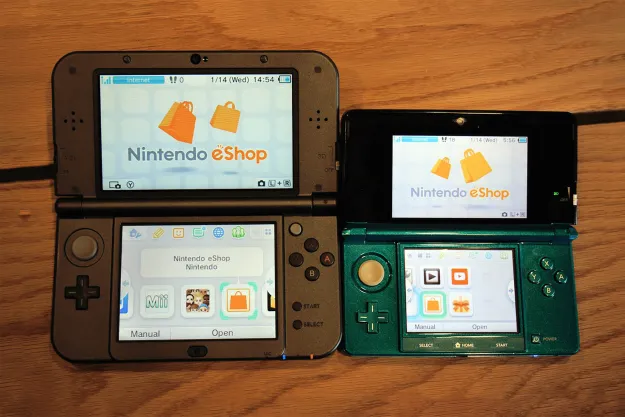
The Super Smash Bros. series has always been about confectionary fan service first and competitive video game fisticuffs second. Consider the top-level pitch: up to four player-driven action figures of Mario, Link, Samus, and other Nintendo icons are beating the crap out of each other in a toy box. The money can’t come in fast enough.
The delight of seeing all of these characters together is the appeal. So people were understandably upset when creator Masahiro Sakurai told Weekly Famitsu that Super Smash Bros. Wii U/3DS would be skipping a story mode like Smash Bros. Brawl‘s Subspace Emissary, meaning that the earlier game’s character mash-up movies were gone as well. But it was when Sakurai went on to say that the new game’s skipped cutscenes were a product of people uploading Brawl‘s video to YouTube that people went ballistic.
It’s understandable that people are irritable about this. After all, no gaming company in history is as backward and cowardly when it comes to making business and content decisions regarding the Internet as the old Big N. As recently as summer 2013, Nintendo moved to take legal action that nearly blocked the Evo Championship Series from streaming – and at one point, even using – Super Smash Bros. Brawl as part of its annual competition. The risk-averse attitude speaks to an inherent fear at the company of even slightly tarnishing its reputation. This isn’t a new attitude at all.
Just look at the monstrous 16-digit Friend Code on Nintendo DS, which players were required to exchange in order to play online together in addition to separate game-specific registration codes. This launched the same year that Facebook launched and MySpace became so large that News Corp. spent $580 million on it. Nintendo still won’t institute a centralized account system for digital distribution on Nintendo 3DS and Wii U. Then there are the straight-up baffling incidents, such as one back in 2004 when the company bombarded pornographic website Suicide Girls with cease and desist notices because one model used the word “Metroid.” Really.
The freshness of the Evo incident casts an added pall over Sakurai’s comments, and speaks to some of the backlash that followed in the wake of his revelations. “They were not only trying to shut down the stream, they were trying to shut down the event,” Evo co-founder Joey Cuellar told OneMoreGameTV, “[They] didn’t present us with any options to keep it open.” Only after fans went berserk on Twitter, Facebook, and elsewhere did Nintendo reverse its policy.
In the case of Super Smash Bros. Wii U, though, Nintendo isn’t being its usual risk-averse self. Sakurai’s made a legitimate design decision here, he just expressed it poorly. “Unfortunately, the movie scenes we worked hard to create were uploaded to the Internet,” Sakurai said (translation courtesy of Kotaku East’s Toshi Nakamura). “You can only truly wow a player the first time he sees [a cutscene]. I felt if players saw the cutscenes outside of the game, they would no longer serve as rewards for playing the game, so I’ve decided against having them.”
He’s right! What reason is there for playing The Subspace Emissary other than to see the cutscenes? The levels are a slog, and it’s a wholly tedious way to unlock new characters to use in the game proper. Having a big narrative arc for Super Smash Bros. was a fun idea, but it simply didn’t work as well as it could have. Low quality coupled with little incentive to play the mode – all those sweet, fun cutscenes are just a Google search away, after all – means that there’s no sense in wasting resources on the content.
Take note: Sakurai did not say their wouldn’t be single player content, just no story mode. There were multiple single player modes in Super Smash Bros. Melee, including the far more playable Adventure. Rather than drawn out stages that culminated in flashy cutscenes, these were quick, snappy action gauntlets. Then there was Target Test, another swell solo mode that teased the brain and trained you to learn each character’s moveset in detail. Wouldn’t people rather have these than some droning story mode? The game won’t even be completely devoid of cutscenes! Sakurai said there will still be movies similar to the intros shown at E3 for Mega Man and Wii Fit Trainer.
Unless Sakurai says in the future that there won’t be a single player mode or you’re a diehard fan of Subspace Emissary – and I acknowledge you exist, somewhere – there’s nothing to get upset about. Nintendo must pay attention to the fan reaction to Sakurai’s statements, though. The fact that the immediate reaction to the news was anger demonstrates just how much built up anger and resentment there is toward the company and its anti-consumer policies.
Editors' Recommendations
- Nintendo introduces a new Super Smash Bros. Switch OLED for Black Friday
- Nintendo is shutting down online services for 3DS and Wii U next April
- Download these rare Wii U games before they disappear
- Don’t miss these Easter eggs from The Super Mario Bros. Movie’s new trailer
- Nintendo’s Wii Shop Channel and DSi shops are back online


